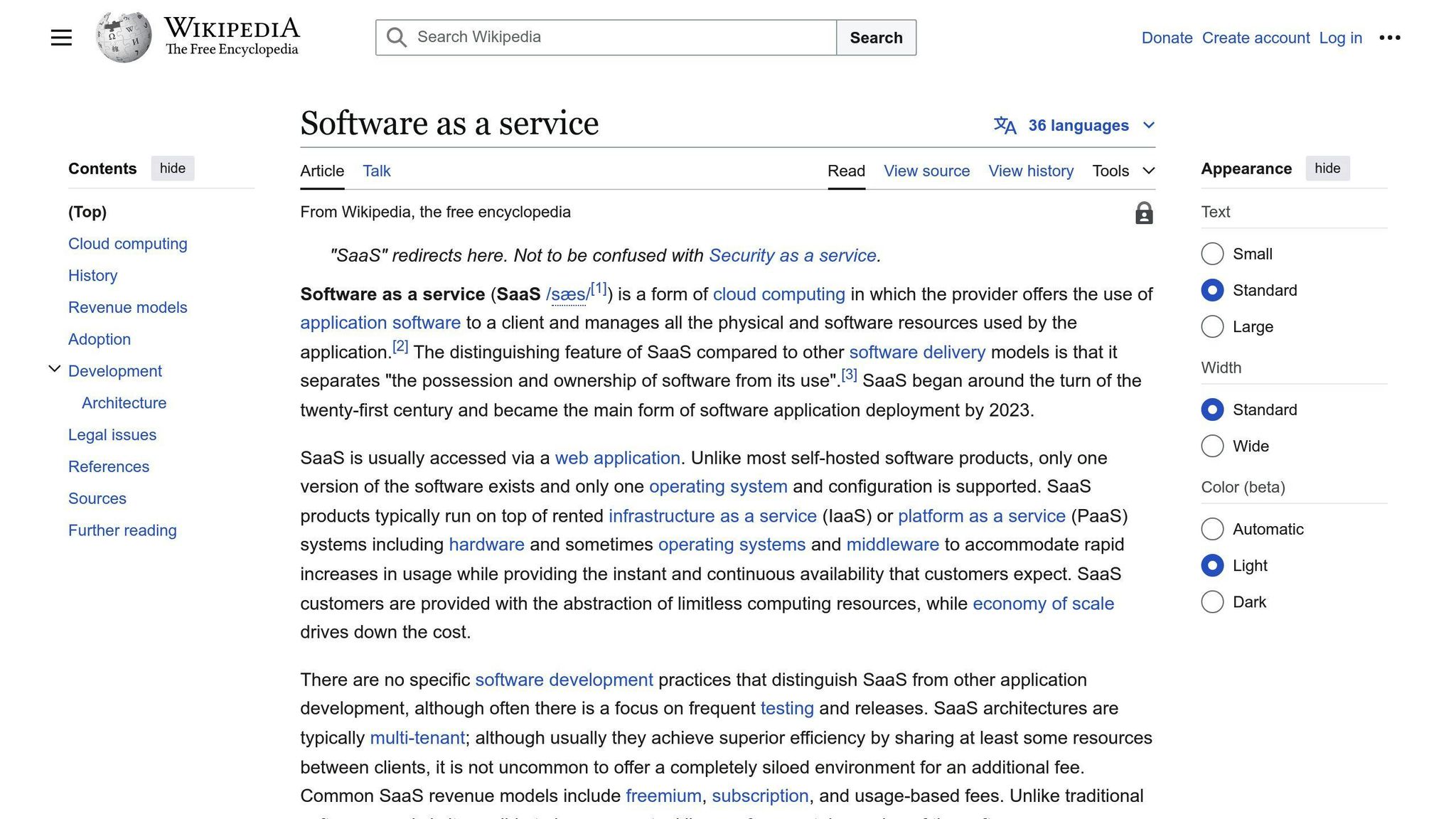SaaS Brand Advocacy: 11 Steps to Turn Customers into Advocates
Learn how to turn SaaS customers into powerful brand advocates with 11 key steps, benefits, and tracking metrics. Find potential advocates, engage on social media, and offer early access to new features.

Justin Britten

SaaS brand advocacy turns happy customers into promoters of your product. Here's a quick guide to creating brand advocates:
- Find potential advocates
- Provide excellent customer service
- Start a rewards program
- Ask for referrals
- Build a user group
- Use customer stories
- Engage on social media
- Personalize messages
- Ask for and use feedback
- Create helpful content
- Offer early access to new features
Key benefits of brand advocacy:
| Benefit | Description |
|---|---|
| Trust | Builds credibility through word-of-mouth |
| Growth | Brings in new customers |
| Insights | Provides valuable product feedback |
| Loyalty | Increases customer retention |
Tracking success:
| Metric | What It Measures |
|---|---|
| Referral Rate | New customers from referrals |
| Engagement Rate | Customer interactions |
| Social Media Shares | Content popularity |
| Retention Rate | Customer loyalty |
| Net Promoter Score | Overall customer satisfaction |
By following these steps and tracking key metrics, you can turn your SaaS customers into powerful brand advocates.
SaaS Brand Advocacy Basics

How SaaS Brand Advocacy is Different
SaaS brand advocacy is special because of how software companies work. In SaaS:
- Customers rely heavily on the products they use
- Customer opinions can make or break a business
- Products are often subscription-based, creating ongoing relationships
These factors make customers more likely to become brand advocates.
Advantages of Strong Brand Advocates
Having customers who promote your brand can help your SaaS business in many ways:
| Advantage | Description |
|---|---|
| Trust | Happy customers sharing good experiences builds trust |
| New Customers | Word-of-mouth brings in more users |
| Product Insights | Advocates give useful feedback to improve the product |
| Customer Loyalty | Promoters are more likely to keep using the product |
Brand advocates are important because:
- People trust friends' recommendations more than ads
- They help the company grow by bringing in new customers
- Their feedback helps make the product better
- They tend to stick with the product longer
Getting Ready for Brand Advocacy
Before starting advocacy programs, companies need to focus on key areas that help create advocates. Good brand advocacy starts with happy customers who trust and like the company.
Making Products Better and Customers Happier
Happy customers are more likely to stay with a company and tell others about it. To make customers happy:
- Make sure your product works well and helps customers
- Have a friendly, easy-to-use product
- Give customers good value for their money
When customers really like a product, they often tell others about it. This can help bring in new customers without spending money on ads.
| What to Focus On | Why It's Important |
|---|---|
| Product Quality | Customers stay if the product works well |
| Customer Support | Quick help keeps customers happy |
| Regular Updates | Improving the product keeps it useful |
By working on these areas, companies can make customers happier. Happy customers are more likely to become brand advocates.
Putting Customers First
Putting customers first helps build trust and loyalty. This means thinking about what customers need and want.
To put customers first:
- Ask for feedback and use it to make things better
- Talk to each customer in a way that fits them
- Make sure support staff can solve problems quickly
When companies focus on customers, it helps in many ways:
| Benefit | How It Helps |
|---|---|
| Loyal Customers | Customers stay with brands that care about them |
| Happy Customers | Personal service makes customers feel good |
| Good Reviews | Happy customers tell others about the company |
11 Steps to Turn Customers into Advocates
1. Find Potential Advocates
Look for customers who might become brand advocates:
| Customer Behavior | What It Means |
|---|---|
| Often uses the product | Customer likes the product |
| Gives good feedback | Customer is happy with the product |
| Tells others about the product | Customer wants to share their good experience |
| Joins online groups about the product | Customer is interested in the product community |
By watching for these signs, companies can find customers who might tell others about their product.
2. Give Great Customer Service
Good customer service helps create loyal customers:
| What to Do | Why It Helps |
|---|---|
| Help new customers get started | Makes customers feel welcome |
| Fix problems quickly | Keeps customers happy |
| Make sure the product works well | Customers enjoy using the product |
When customers get good service, they're more likely to tell others about the product.
3. Start a Rewards Program
A rewards program can make customers feel special:
| Program Ideas | How It Helps |
|---|---|
| Give discounts for long-time customers | Customers want to keep using the product |
| Let loyal customers try new features first | Customers feel important |
| Create a community for loyal customers | Customers feel connected to the product |
Rewards programs can make customers want to keep using the product and tell others about it.
4. Ask Customers to Refer Friends
Encourage customers to tell their friends about the product:
| Referral Program Ideas | Benefits |
|---|---|
| Give rewards for successful referrals | More new customers join |
| Thank customers who refer others | Customers feel appreciated |
| Make it easy to share about the product | More people hear about the product |
When customers tell their friends, it helps the company grow and creates more advocates.
5. Build a User Group
Create a place for customers to talk to each other:
| User Group Benefits | How It Helps |
|---|---|
| Customers can share tips | People learn more about the product |
| Company can hear customer ideas | Product gets better |
| Customers feel part of a community | People want to stay with the product |
User groups help customers feel connected and more likely to speak well of the product.
6. Use Customer Stories
Share stories from happy customers:
| Ways to Use Customer Stories | Why It Works |
|---|---|
| Show how customers use the product | Others see how it can help them |
| Let customers share their own stories | Real experiences feel trustworthy |
| Highlight different types of customers | More people can relate |
When customers see others succeeding with the product, they're more likely to try it and tell others.
7. Talk on Social Media
Use social media to connect with customers:
| Social Media Tips | What It Does |
|---|---|
| Answer customer questions quickly | Shows the company cares |
| Share helpful information | Keeps customers interested |
| Thank customers who mention the product | Makes customers feel valued |
Being active on social media helps build good relationships with customers.
8. Make Messages Personal
Use what you know about customers to make messages just for them:
| Personalization Ideas | Why It's Good |
|---|---|
| Use the customer's name | Makes messages feel personal |
| Mention how they use the product | Shows you pay attention |
| Send tips based on their needs | Helps customers get more value |
Personal messages make customers feel important and more likely to stay with the product.
9. Ask for and Use Feedback
Listen to what customers say and make changes:
| Feedback Methods | How It Helps |
|---|---|
| Send short surveys | Get quick input from customers |
| Read customer comments | Understand what customers think |
| Make changes based on feedback | Show customers their opinion matters |
When customers see their ideas used, they feel heard and want to support the product more.
10. Create Helpful Content
Make information that helps customers:
| Content Ideas | Benefits |
|---|---|
| How-to guides | Customers learn to use the product better |
| Tips and tricks | Customers get more value from the product |
| Industry news | Customers see the company as knowledgeable |
Helpful content shows customers the company wants them to succeed, making them more likely to recommend the product.
11. Let Customers Try New Features
Give some customers early access to new things:
| Early Access Benefits | Why It Works |
|---|---|
| Customers feel special | They're more likely to stay with the product |
| Get feedback before full release | Product improves before everyone uses it |
| Create excitement about new features | Customers tell others about what's coming |
Letting customers try new features makes them feel important and more likely to speak well of the product.
Tracking Brand Advocacy Success
Key Metrics for Brand Advocacy
To see if your brand advocacy program is working, you need to track some important numbers. Here are the main things to look at:
| Metric | What It Means |
|---|---|
| Referral Rate | How many new customers come from current customers telling others |
| Engagement Rate | How much customers interact with your brand on social media |
| Social Media Shares | How often people share your content on social media |
| Customer Retention Rate | How many customers keep using your product over time |
| Net Promoter Score (NPS) | How happy and loyal your customers are |
By watching these numbers, you can see how well your program is doing and where you can make it better.
Tools to Measure Advocate Engagement
To track how much customers are engaging with your brand, you'll need some tools. Here are some helpful ones:
| Tool | What It Does |
|---|---|
| Google Analytics | Shows you how people use your website |
| Social Media Tools (like Hootsuite) | Tracks how people interact with you on social media |
| Customer Relationship Management (CRM) Software | Keeps track of how you talk to customers |
| Net Promoter Score (NPS) Software | Measures how happy your customers are |
These tools can help you see how well your brand advocacy efforts are working. They give you information to make smart choices about your program.
Wrap-Up
Quick Review of the 11 Steps
Here's a simple recap of the 11 steps to turn customers into advocates:
| Step | Description |
|---|---|
| 1. Find Potential Advocates | Look for happy customers who might tell others about your product |
| 2. Give Great Customer Service | Help customers quickly and make sure they're happy |
| 3. Start a Rewards Program | Give loyal customers special perks |
| 4. Ask Customers to Refer Friends | Encourage customers to tell others and thank them for it |
| 5. Build a User Group | Create a place for customers to talk and share ideas |
| 6. Use Customer Stories | Share real examples of how customers use your product |
| 7. Talk on Social Media | Connect with customers online and answer their questions |
| 8. Make Messages Personal | Use what you know about customers to send them relevant info |
| 9. Ask for and Use Feedback | Listen to customers and make changes based on what they say |
| 10. Create Helpful Content | Make guides and tips to help customers use your product better |
| 11. Let Customers Try New Features | Give some customers early access to new things |
By following these steps, you can help turn your customers into people who tell others about your product.
Long-Term Effects of Good Brand Advocacy
When customers become advocates, it helps your business in many ways:
| Effect | How It Helps |
|---|---|
| More Loyal Customers | Advocates tend to keep using your product for a long time |
| Better Company Image | When people say good things, others think well of your company |
| More New Customers | Advocates tell their friends, bringing in new users |
| Stand Out from Competitors | Having lots of happy customers can make your company look better than others |
These benefits can help your business grow and do well over time.
FAQs
What is the most important priority for a customer experience advocate?
The main focus for a customer experience advocate should be making customers happy. Here's what matters most:
| Priority | Why It's Important |
|---|---|
| Understand customer needs | Helps you serve them better |
| Give personal attention | Makes customers feel valued |
| Create great experiences | Keeps customers coming back |
| Build a community | Turns happy customers into advocates |
